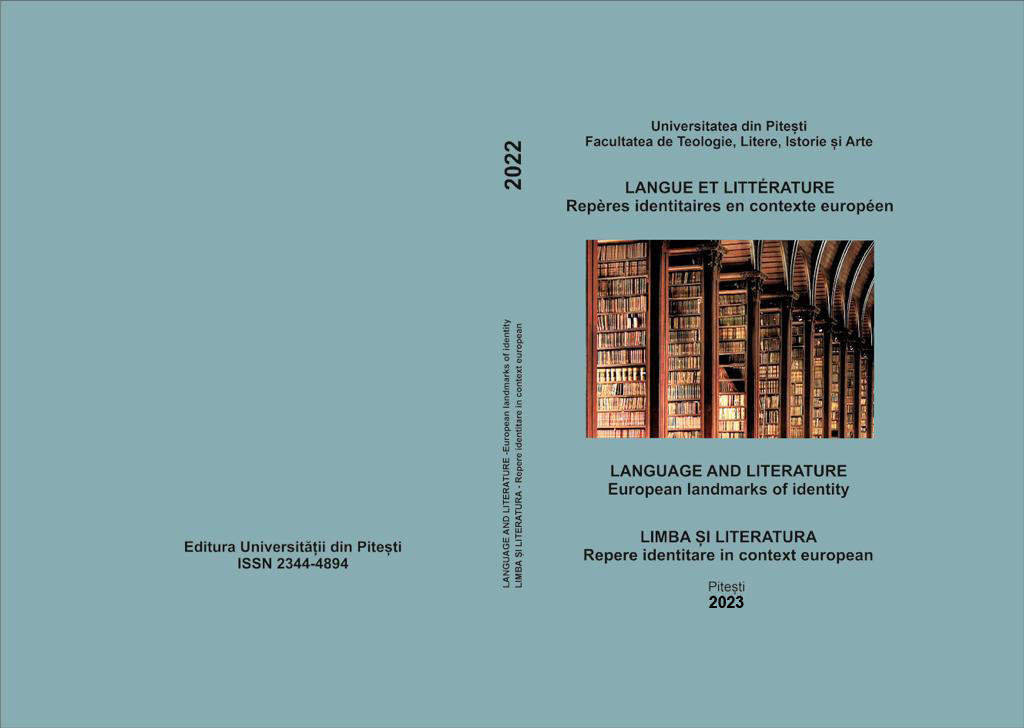THE VOICE OF GOD IN THE DIVERSITY OF CREATION.
A THEOLOGICAL ANALYSIS OF THE MURAL PAINTINGS FROM THE ECCLESIASTICAL SPACE OF THE SUCEVIȚA MONASTERY
THE VOICE OF GOD IN THE DIVERSITY OF CREATION.
A THEOLOGICAL ANALYSIS OF THE MURAL PAINTINGS FROM THE ECCLESIASTICAL SPACE OF THE SUCEVIȚA MONASTERY
Author(s): Ciprian Cassian CalanceaSubject(s): Fine Arts / Performing Arts, Visual Arts
Published by: Editura Universităţii din Piteşti
Keywords: God’s voice; Logos; Creation; painting; religious symbols; church; Sucevita Monastery;
Summary/Abstract: This work explores the divine implications involved in the diversity of God’s creation and emphasizes their representation in the mural paintings from the ecclesiastical space of the Sucevița monastery. Through the iconographic analysis and the theological interpretation of the six days of Creation, the work highlights the ways in which sacred art transmits spiritual messages and dogmatic teachings through the artistic and symbolic context of the church. The murals in the nave of the church illustrate the genesis of Creation, nature and its living things, expressing through them the beauty and complexity of the universe created by God. In the six days of Creation, God’s iconographic action is suggested by the gesture of blessing the Logos, even if, in his psalms, the prophet David tells us that “For he spoke, and it came to be; he commanded, and it stood firm” (Ps 33, 9). The Logos, in its theological sense, transcends the notion of word or reason by identifying itself with Jesus Christ - the divine Word, One of the Trinity through whom all were created by the Father in the Holy Spirit. For this reason, He is represented in the Sucevita murals wearing a golden mantle and having the character of Creator. The church murals under study, which express God’s voice in the diversity of His creation, are considered to be in themselves blessings to believers. Sacred images become means by which God transmits His blessing to the community of believers, inspiring and supporting them in their spiritual growth and restoration of communion with God. Thus, not only does this paper explore the perception of God’s voice in Creation, but it also highlights how this knowability can be experienced as a blessing in the lives of the believers. By analysing these sacred images, the work provides a deeper understanding of how believers perceive and interpret the voice of God in the diversity of Creation, in an artistic and theological context. This study examines the manner in which the iconographic expression of the Logos in the ecclesial space can influence the experience of divine grace by the faithful and how religious art can visually communicate the voice of God through theological and spiritual messages. It also highlights the role of the painter and the sponsor as an intermediary between the divine and the human, as well as the impact they can have on the monastic community in particular and the believers participating in the liturgical act in general. By analysing the concrete examples of the six days of Creation, it is demonstrated how the voice of God can bring an additional and deeper dimension to church life. Not only does this facilitate a deeper understanding of the scriptural passages highlighted in the mural scenes, but, more than that, it also has the potential to create the ideal environment in which man is invited to experience prayerful contemplation and conversation with God.
Journal: LIMBA ȘI LITERATURA – REPERE IDENTITARE ÎN CONTEXT EUROPEAN
- Issue Year: 2023
- Issue No: 32
- Page Range: 99-111
- Page Count: 13
- Language: English

